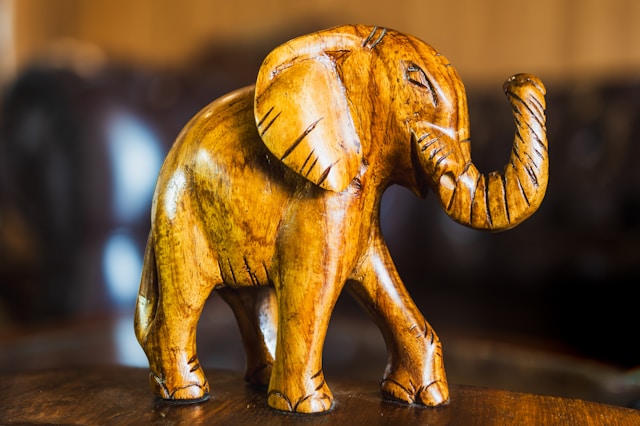Ever noticed how a wooden carving seems to hold a silent story? How the grain dances in the light, each line hinting at the artisan’s hand and the tree’s long life? Wooden handicrafts in India aren’t just decorations; they’re tangible connections to history, nature, and artistry. But like any cherished heirloom, they need a little TLC to keep those stories alive and vibrant. Think of this guide as your friendly map to ensuring these wooden crafts continue to enchant for years to come.
Let’s move beyond basic dusting and delve into the heart of wooden handicraft care, transforming you from a casual owner into a true guardian of these natural treasures.
Decoding the DNA: Understanding Your Wood’s Unique Needs
Before you reach for the cleaning supplies, take a moment to connect with your piece. What kind of wood is it? What kind of finish does it have? This detective work will guide your every step.
- Hardwood Heroes vs. Softwood Sentinels: Imagine hardwoods (teak, sheesham, rosewood) as sturdy knights in shining armor – dense, durable, and relatively low-maintenance. Softwoods (pine, cedar, fir) are the gentle poets, more susceptible to scratches and dings, requiring a softer touch. If you’re unsure, err on the side of caution and treat it like a delicate softwood.
- Pro Tip: A quick Google search can often help identify the wood type based on its color, grain pattern, and weight.
- Finish Line: Identifying the Protective Layer: The finish is like the wood’s protective shield, but each shield has its own vulnerabilities:
- Varnish/Lacquer: Shiny, smooth, and water-resistant – think of them as the superheroes of finishes. But harsh chemicals can be their kryptonite.
- Oil/Wax: A more natural, matte finish that enhances the wood’s grain. These finishes need regular reapplication to stay effective. Imagine them as needing regular “moisturizing.”
- Paint: Offers a wide range of colors and textures, but can be prone to chipping and fading.
- Unfinished: The most vulnerable, requiring extra care to prevent staining and warping.
Cleaning Rituals: Gentle Spas for Wooden Beauty
Think of cleaning as a spa day for your handicrafts. The goal is to refresh and rejuvenate, not to strip away their natural beauty.
- Dusting: The Daily Ritual: Make dusting a habit! Use a soft, lint-free cloth (microfiber is fantastic) to gently remove dust and debris. For intricate carvings, a soft-bristled brush (an old toothbrush works wonders) can reach those tricky nooks and crannies.
- Pro Tip: Dampen the cloth very slightly for stubborn dust, but always dry immediately.
- Spot Cleaning: Addressing Accidental Mishaps: Life happens! Here’s how to handle common spills:
- Water Rings: Place a clean, thick cloth over the ring and gently iron on a low setting. The heat can help draw the moisture out.
- Sticky Residue: A mixture of equal parts white vinegar and water can often dissolve sticky messes. Apply with a soft cloth, let it sit briefly, and wipe clean.
- Grease: A mild dish soap solution can help cut through grease. Use sparingly and rinse thoroughly.
- The “No-No” List:
- Abrasive Cleaners: Steer clear of scouring pads, steel wool, and harsh chemicals. They’re like sandpaper to your wood!
- Ammonia-Based Cleaners: Can damage the finish and dry out the wood.
- Excessive Water: Wood and standing water are not friends.
Scratch SOS: Repairing Minor Imperfections
Scratches are inevitable, but they don’t have to be permanent.
- The Magic of Wax Crayons: For shallow scratches, find a wax crayon that closely matches the wood color. Gently color in the scratch, then buff with a soft cloth to blend.
- Concealing Deeper Gouges:
- Wood Filler: Use a wood filler that matches the wood’s color. Apply it carefully, let it dry completely, and then sand it smooth with fine-grit sandpaper.
- Touch-Up Markers: Wood touch-up markers are great for disguising small chips and scratches.
- Pro Tip: Always test your repair method on an inconspicuous area first to ensure color match and compatibility.
Shielding Your Treasures: Protection and Prevention
Prevention is always better than cure! Take these steps to protect your handicrafts from future damage.
- Location, Location, Location:
- Sunlight: Direct sunlight can fade and damage wood finishes. Keep your handicrafts away from sunny windows.
- Heat: Avoid placing them near heat sources like radiators or fireplaces.
- Humidity: Fluctuations in humidity can cause wood to warp and crack. Aim for a stable environment.
- Protective Barriers:
- Coasters and Placemats: Always use coasters under drinks and placemats under hot dishes.
- Felt Pads: Attach felt pads to the bottom of furniture legs to prevent scratches on floors.
- Regular Maintenance:
- Oiling/Waxing (for applicable finishes): Reapply oil or wax regularly to maintain the wood’s moisture and protect the finish. Follow the manufacturer’s instructions carefully.
- Pro Tip: Use a high-quality wood polish to protect the finish and enhance the wood’s natural beauty.
The Curator’s Touch: When to Seek Professional Help
Sometimes, the damage is beyond DIY repair. Don’t hesitate to call in the experts.
- Valuable or Antique Pieces: If you own a valuable antique or heirloom, it’s best to leave repairs to a professional furniture restorer.
- Structural Damage: Cracks, warping, or loose joints require professional attention.
- Extensive Finish Damage: If the finish is severely damaged or peeling, a professional can restore it to its original glory.
Passing on the Legacy: Sharing the Knowledge
Caring for wooden handicrafts is more than just maintenance; it’s about preserving history and artistry. Share your knowledge with others, and teach future generations to appreciate and cherish these beautiful objects.
By following these tips and techniques, you’ll transform from a simple owner to a true steward of wooden artistry. You’ll ensure that these “whispers of the woods” continue to resonate with beauty and meaning for generations to come. So, go forth and nurture your wooden treasures, celebrating their timeless elegance and the stories they hold within! Ready to buy Indian handicrafts online? Visit Ethnic India’s website today.
Photo by asif sharif on Unsplash (Free for commercial use)
Image published on 12 February 2025




